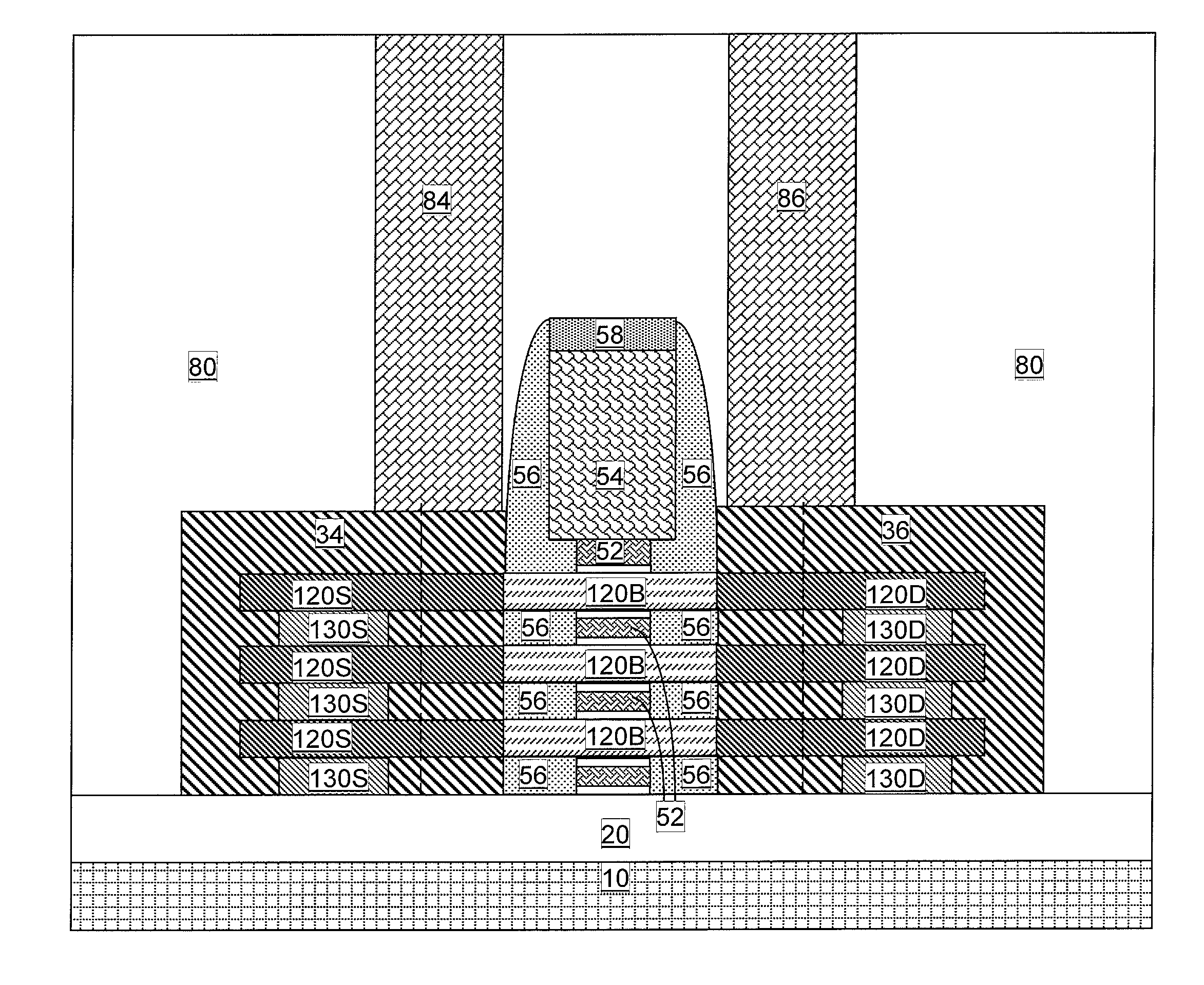Non-replacement gate nanomesh field effect transistor with pad regions
a technology of pad region, which is applied in the field of wirefirst, gatefirst nanomesh field effect transistor, can solve the problems of increasing the processing time and manufacturing cost of increasing the amount of current per unit device area, and complex processing steps used to form nanowire field effect transistors
- Summary
- Abstract
- Description
- Claims
- Application Information
AI Technical Summary
Benefits of technology
Problems solved by technology
Method used
Image
Examples
Embodiment Construction
[0042]As stated above, the present disclosure relates to a wire-first, gate-first nanomesh field effect transistor with epitaxially thickened source and drain regions, and a method of manufacturing the same. Aspects of the present disclosure are now described in detail with accompanying figures. It is noted that like reference numerals refer to like elements across different embodiments. The drawings are not necessarily drawn to scale.
[0043]Referring to FIG. 1, an exemplary semiconductor structure according to an embodiment of the present disclosure can be formed by providing a semiconductor-on-insulator (SOI) substrate 8 including a handle substrate 10, an insulator layer 20, and a single crystalline semiconductor material layer on top of the insulator layer. The handle substrate 10 can include a semiconductor material, an insulator material, and / or a conductive material. The insulator layer 20 can include, for example, silicon oxide, silicon nitride, aluminum oxide, or any other d...
PUM
 Login to View More
Login to View More Abstract
Description
Claims
Application Information
 Login to View More
Login to View More - R&D
- Intellectual Property
- Life Sciences
- Materials
- Tech Scout
- Unparalleled Data Quality
- Higher Quality Content
- 60% Fewer Hallucinations
Browse by: Latest US Patents, China's latest patents, Technical Efficacy Thesaurus, Application Domain, Technology Topic, Popular Technical Reports.
© 2025 PatSnap. All rights reserved.Legal|Privacy policy|Modern Slavery Act Transparency Statement|Sitemap|About US| Contact US: help@patsnap.com



